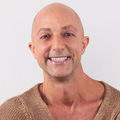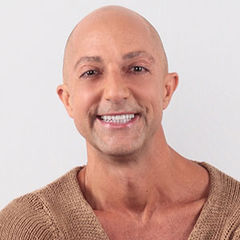Today’s active aging market is the largest growing fitness demographic in the industry, with more than 10,000 people in North American turning 65 years old each day. We now know more about aging than ever before, and peer-reviewed, published, refereed research offers some great news: Of the five types of aging—chronological, functional, biological, psychological and social—we can not only train, but reverse, four of them To help celebrate Active Aging week, let’s take a closer look at these researched benefits.
Chronological Age
Chronological age refers to the days you have been alive on the planet since birth. Of course, this is the one age marker that cannot be reversed or trained. However, a class of 25 participants all possessing the same chronological age will likely have various health issues, from osteoporosis to heart disease. That’s why it is so important for fitness professionals to be well acquainted with the common health concerns facing this demographic. The ACE Senior Fitness Manual and specialty certification are great resources for learning about these concerns.
Functional Age
Functional age refers to the abilities we have to be able to meet all of our activities of daily life (ADL) independently, which form the definition of self-efficacy. Research states that the best way to improve functional age is to train functional movements required for everyday life while also performing mental work within the confines of multi-mode training. This means that, instead of asking clients to perform 30 minutes of cardiovascular, strength and flexibility training, a more effective approach might be to create specific tasks and continuously sequence among these three modes of training for up to three minutes per mode and task. Furthermore, research states that calling such movements “games” with this population produces greater results than telling them “we are exercising” (Morgenthal and Shephard, 2005). To be sure, balance training in various forms should be a component of each of those modes (Larkin, 2012), which we define as training the body as an integrated unit to be able to both maintain and move it in a plethora of daily required positions.
Biological Age
Biological age refers to the medical status of a client based on the medical community’s standards and guidelines. Multi-mode training can not only bring about health and wellness gains, but can also potentially reverse some health issues (American College of Sports Medicine, 2009). Bernadette O’Brien, M.A., age 83, is the oldest ACE Certified individual on the planet. She trains both group and private clients daily. When she began moving after decades of smoking and living a sedentary lifestyle, her weight loss in the midsection allowed her pancreas to start producing insulin again and she reversed her type 2 diabetes. “Not everyone with diabetes can reverse it, but rarely does the medical community tout movement and fat loss as a way to try. That I’m completely off all medication is thrilling. It really does seem like I’m going back in time with every workout,” she claims. “I’m trying to help others to explore these options as well.” See more of O’Brien’s story at http://bit.ly/SuperBettysStory.
Psychological Age
Psychological age refers to the ability to perform necessary mental tasks. Current research suggests that multi-mode training as can also improve psychological age through neuroplasticity training. “This occurs when we train the brain in all of its functions—just as if it were a muscle—at the same time we train the muscles,” explains O’Brien. Instead of sitting or standing and engaging in short-term recall, for example, O’Brien’s clients play a “gait game” in which they have to walk around the room and react to the environment, all while having to simultaneously recall various digits or words. O’Brien calls this activity “Walkie-Talkie,” because neuroplasticity training requires participants to perform both physical and psychological games at the same time. “Because we have to use our brain to react in life, why not make [clients] train that way with a neuroplasticity approach?” asks O’Brien. And the medical community agrees, recommending that we “involve verbal tasks with movement as we train neuroplasticity” (Berchtold et al., 2005; Kramer et al., 2005).
Social Age
Social age refers to an individual’s ability to combine physiological, functional and biological age and accomplish tasks in society. To enhance social age in a group setting, the most recent research reveals that some games included in a group class should feature social interactions, but only for up to five minutes at a time (Danner, Snowdon and Friesen, 2001). “We engage in group games during class, and then, about every 10 minutes or so, I’ll have them do a “gait game” around the room and sometimes work with a partner,” explains O’Brien. “I never let them choose their best friends because some could feel left out, so I constantly change up the partners. Life is unpredictable, so, too, should be their partners. In addition, it doesn't really matter if they like their partner or not because we’ll never be with the same person for more than three to five minutes.”
Our cutting-edge understanding of these four types of aging brings with it both great responsibility and possibility for today’s personal trainer and group fitness instructors. Truly, with the research available today, we can call ourselves anti-aging specialists when we incorporate these proven strategies with the over-50 population.
References
American College of Sports Medicine (2009). ACSM’s Exercise Management for Persons with Chronic Diseases and Disabilities (3rd ed.). Campaign, Ill.: Human Kinetics.
Berchtold, N.C. et. al. (2005). Exercise primes a molecular memory for brain-derived neurotrophic factor protein induction in the rat hippocampus. Neuroscience, 133, 853-861.
Centers for Disease Control and Prevention (2012). National Center for Injury Prevention and Control, Division of Unintentional Injury Prevention. Falls among older adults: An overview.
Danner, D.D., Snowdon, D.A. and Friesen, W.V. (2001). Positive emotions in early life and longevity: Finding from the nun study. Journal of Personality and Social Psychology, 80, 5, 804-813.
Kramer, A. et al. (2005). Fitness, aging and neurocognitive function. Neurobiology of Aging. 26S, 124-127.
Larkin, M. (2012). Exergamers wellness clubs: Boosting physical activity, socialization and quality of life for older adults. The Journal of Active Aging, 11, 4, 20-28.
Morgenthal, A.P. and Shephard, R.J. (2005). Physiological aspects of aging. In C.J. Jones and D.J. Rose (Eds). Physical Activity Instruction of Older Adults, 38-51. Champaign, Ill.: Human Kinetics.
Lawrence Biscontini, M.A., is not only an Active Aging specialist, but also has entered into the chronological realm of this population as well. He highly recommends the new ACE Senior Fitness Manual, as well as the information available at icaa.cc. His newest book is BOSU Mobility and Stability for Active Aging, which not only incorporates the information outlined here but also contains the most comprehensive, up-to-date bibliography in the industry on this topic, available at bosu.com. Do you train those over age 50? Tweet, share and find Lawrence at findLawrence.com.




 by
by 




 by
by